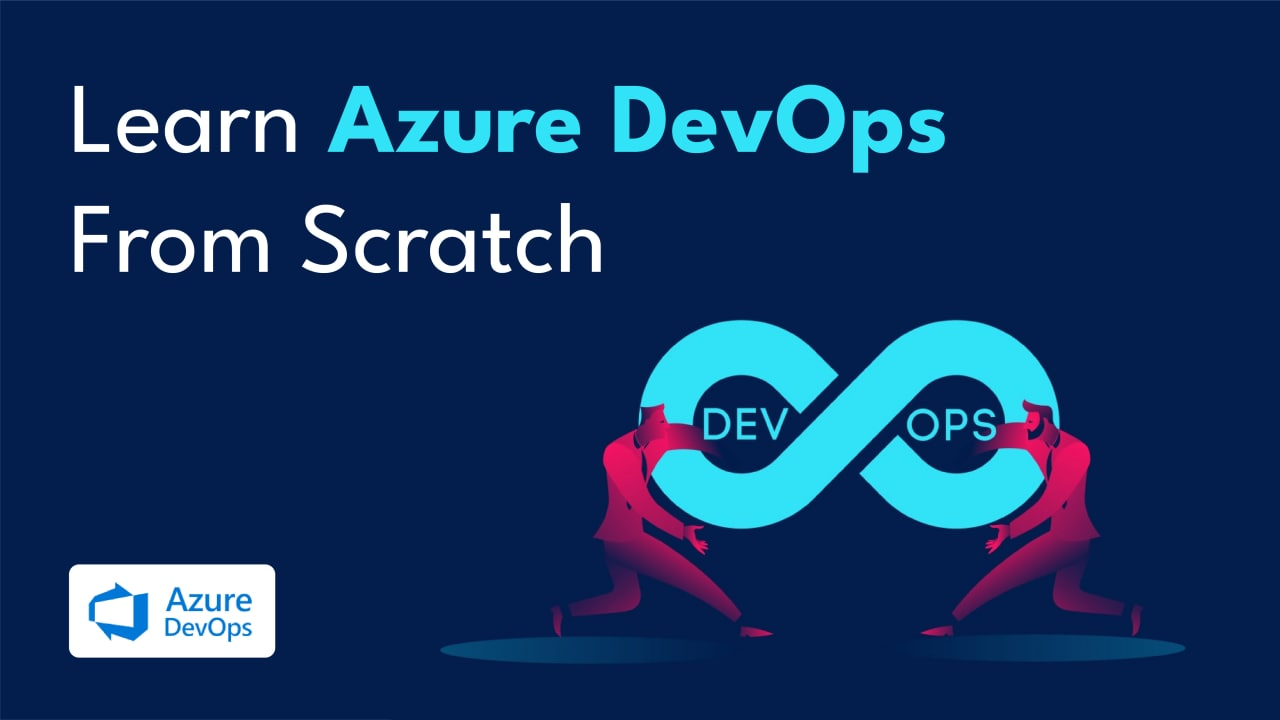What you'll learn :-
Businesses are looking for professionals who are up to date on the latest DevOps approaches due to the growing popularity of Azure DevOps. This course will teach both new and experienced developers how to use Azure Devops and how it can help improve your software delivery process in Step by step tutorial with source code.
Course Content
- Chapter 1:- Opening Azure DevOps account and creating project.
- Chapter 2:- DevOps Fundamentals and EIGHT structure life cycle of Devops.
- Chapter 3:- Accessing Azure DevOps project from Azure portal.
- Chapter 4:- Understanding Organization, Project structure.
- Chapter 5:- Understanding Private and Public project.
- Chapter 6:- Mapping Boards, Repos, Pipelines, Test plan & Artifacts with DevOps life cycle.
- Chapter 7:- Revising the five important elements of Azure DevOps.
- Chapter 8:- Step 1 The planning phase :- Understanding Boards and work items.
- Chapter 9:- Step 2 Execution :- Checking Simple MVC project code, Cloning, Commit, Synch in Azure repos.
- Chapter 10:- Revising Azure DevOps life cycle using the 5 important elements.
- Chapter 11:- Flattening the Azure DevOps life cycle diagram.
- Chapter 12:- Defining and Understanding Agents in Azure DevOps.
- Chapter 13:- Using project settings to configure agents.
- Chapter 14:- Hosted Agents and Local agents(Self hosted agents).
- Chapter 15:- Step 3 Build :- Creating pipeline and Running the pipeline.
- Chapter 16:- YAML file and versioning in Azure repos.
- Chapter 17:- Understanding the "No hosted Parallelism Error" in Azure DevOps.
- Chapter 18:- Understanding Self hosted agent and Agent pools.
- Chapter 19:- Running, Downloading, Extracting agents, Running Config & Entering PAT.
- Chapter 20:- Assigning Self hosted agents in YAML Pipeline.
- Chapter 21:- Running YAML pipeline with Self hosted agents.
- Chapter 22:- Definition and Acronym of YAML.
- Chapter 23:- YAML basics name/value, space indented, Nested objects & Hyphens.
- Chapter 24:- Understanding Azure DevOps YAML structure(Steps and Tasks).
- Chapter 25:- Practicing Pipeline UI:- Recent, All, Runs, Editing and seeing details.
- Chapter 26:- Updating YAML with publish task.
- Chapter 27:- Step 4 :- Running the pipeline and checking the artifact
- Chapter 28:- Drop folder, Extracting artifact, viewing the compiled binaries.
- Chapter 29:- Doing a Manual Review(Installing IIS and publishing the ASP.NET app)
- Chapter 30:- Creating the release pipeline.
- Chapter 31:- Understanding Deployment groups.
- Chapter 32:- Creating a deployment groups using powershell scripts.
- Chapter 33:- Creating release pipelines understanding stages.
- Chapter 34:- Step 5 :- Running the release pipeline and deploying.
- Chapter 35:- Revising the complete Azure DevOps Cycle.
- Chapter 36:- Variable definition, Creating and Accessing variables.
- Chapter 37:- Creating custom variable and read the same .
- Chapter 38:- Variable groups Definition, Creating variable groups.
- Chapter 39:- Defining Variable collection and accessing variable groups.
- Chapter 40:- Variable groups Definition, Creating & accessing variable groups.
- Chapter 41:- Variable vs Variable groups.
- Chapter 42:- Local variables outside the code.
- Chapter 43:- YAML variables vs variable groups vs local variables.
- Chapter 44:- YAML Pipes Multi-scalar execution.
- Chapter 45:- Changing variable values using VSO Task.
- Chapter 46:- Why YAML variables change in next Step?
- Chapter 47:- Perspective of Dev pipeline and release pipelines.
- Chapter 48:- Enabling CI CD in Azure DevOps
- Chapter 49:- Testing the Automation
- Chapter 50:- Solving ASPNetModule problem - Thinking out of the box.
- Chapter 51:- Nunit vs XUnit vs MsTest
- Chapter 52:- Writing the unit test
- Chapter 53:- Testing locally
- Chapter 54:- Using unit test task in pipeline
- Chapter 55:- Understanding the different parameters.
- Chapter 56:- Executing unit test using test task.
- Chapter 57:- Beware of the pattern matching
- Chapter 58:- Running pass , fail scenarios
- Chapter 59:- Creating and understanding starters pipeline.
- Chapter 60:- Revising Steps,Scripts ,Tasks and YAML collections.
- Chapter 61:- Creating Stages,Jobs structure in YAML.
- Chapter 62:- Visualizing / Understanding Stages and Jobs.
- Chapter 63:- Stages VS Jobs.
- Chapter 64:- Demo of Stages and Jobs (Seqeuential).
- Chapter 65:- Visualizing from parallelism perspective.
- Chapter 66:- 3 points to remember for parallelism.
- Chapter 67:- Putting pauses and arranging agents.
- Chapter 68:- Demo of Stages and Jobs (parallelism).
- Chapter 69:- Implementing Dependencies between stages.
- Chapter 70:- Understanding Status Symbols.
World-class training and development programs developed by top teachers
Whats Included
- World-class training teacher
- Bench has zero learning curve
- We handle the rest.



